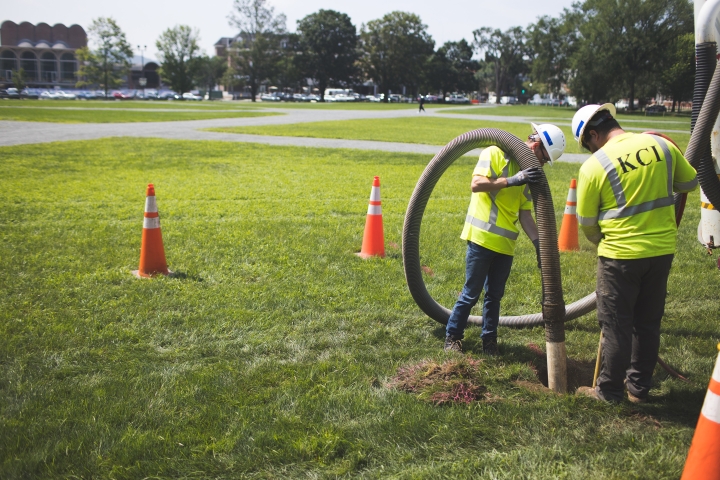A crew using a specially equipped truck is working at various sites on campus for the next week, checking the location of underground utilities as part of the continued campus conversion from steam to hot-water heating.
The switch to hot water is taking place in more than 100 buildings across campus as Dartmouth transitions from a central heating plant and steam-heating system to newer energy technologies that will significantly reduce the institution’s carbon footprint.
The work now underway involves using a vacuum extraction truck to excavate test holes to confirm the location of underground steam piping, tunnels, and other utilities.
Work began on Tuesday as the crew used the truck to vacuum soil from spots about a foot in diameter and 10 feet deep, record what is visible in the hole, and then return the fill to close the hole.
About 20 sites will be checked, with the crew expecting to complete three holes a day, says Patrick O’Hern, senior director of project management services at Dartmouth.
Dartmouth is transitioning over the next decade to a new energy-generation and distribution system designed to reduce the emission of greenhouse gases. A major component of the work is converting from steam heat to hot water, which improves efficiency and is adaptable to future technologies.
Hot-water systems have been installed in eight buildings since the start of the conversion work more than three years ago, O’Hern said.
As the campus hot-water conversion is expanded, Dartmouth plans to eventually phase out its oil-fired steam system and replace it with low-carbon methods, such as geo-exchange and solar thermal systems.


